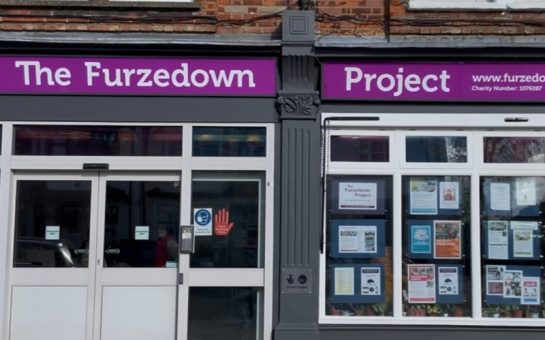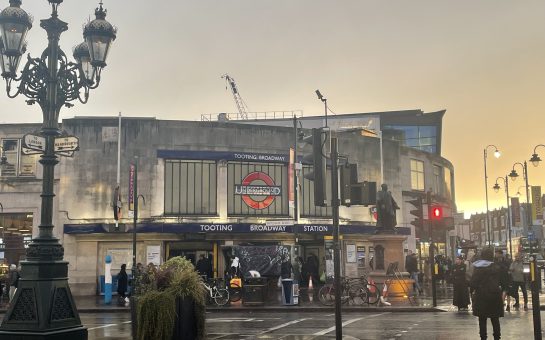With Nokia HERE, Google Maps and Apple Maps all to choose from, we are here to help you make your mind up.

iOS was released almost two months ago, and the one feature that was heralded as the must-have feature was Apple’s new in-house mapping application.
Sadly, it wasn’t what the consumers wanted, nor what they needed.
When Apple Maps launched on September 19 2012, many users found it was now home to a brand new mapping solution, with free turn-by-turn navigation.
Turn-by-turn navigation was a feature many users had begged for after witnessing Android’s free turn-by-turn service, Google Maps Navigation.
From the very start Apple had heralded their mapping application as one of the best, but it was being outdone by the guys from Mountain View and that didn’t sit well with them.
Apple began drifting further away from needing Google, infact iOS6 wasn’t only the end of Google Maps, but also the end of a pre-installed YouTube app.
Yesterday, however, it seems Google was back to save the day, after the major criticism of Apple Maps, which Australian Police had advised against using after someone got stranded in the middle of a desert as a result of the incorrect directions her iPhone had given her.
Google aren’t the only ones trying to get a piece of the mapping pie since Apple’s massive blunder, even Finnish phone giant Nokia is trying to get in on the action, with the release of Nokia HERE.
Nokia’s plans are more humble than that of Apple’s and Google’s, Nokia wants to become the ‘where’ company, noting that Facebook is the who, and Google is the what.
Nokia has seen its market share plummet as a result of iOS and Android, so it’s no wonder their strategy has moved to building the best mapping application ever, after all, they do own Navteq – which supplies mapping data to Yahoo, Bing and Garmin, amongst others.
With Nokia HERE, Google Maps and Apple Maps all to choose from, which do you choose?
Well hopefully this review will give you a little insight into that.
Nokia HERE
Nokia HERE is a mapping application which promises so much, turn-by-turn navigation, live traffic, public transport directions, walking directions – you name it Nokia HERE offers it.
There is a small problem with that though, with Nokia’s insistence on offering every feature under the sun, they haven’t really taken the time to get one feature absolutely perfect.
For instance, the mapping data is great but for some reason they’ve added some pretty low quality maps into their app.
When compared to Nokia Drive on Windows Phone, you can see that Nokia has rushed HERE and has failed to put high-resolution maps into it.
The satellite view isn’t much better – although it blows Apple out of the water.
What you can really see with Nokia HERE is that Nokia is desperate, they rushed this app out when it was half-ready just to ensure that Google doesn’t beat them to the punch, and they utilise the fallout-time they have after Apple’s release of Maps.
While they may not be the best looking maps, they are functional, jam-packed with information from tube stops, to bus stops, to local businesses. While it might not have the extensive local business catalogue as Google, it’s bound to improve.
Nokia HERE isn’t a write-off just yet, with Nokia already proving it can make brilliant mapping applications – note their apps for Symbian and Windows Phone.
They could have waited a little longer to release the app, and saved themselves from the 2.5-star review they currently have in the Apple App Store, along with a whole heap of embarrassment.
Nokia was only trying to help out the Apple Community though, with many users crying for a third-party mapping solution after the disastrous launch of Apple Maps.
This is shown by the fact the Android version of Nokia HERE is yet to launch – and rightly so given that it’ll be hard to beat Google on its own platform.
Whether or not Nokia can survive the beating it is likely to take from Google on iOS, only time will tell, until then I urge you to give it a try, as it’s a great application, which is much more accurate than Apple’s application, with it getting us directly to London Paddington Station, and even gave us the quickest way in – apparently there’s a side-door.
Nokia are unlikely to stick with the HTML5 app that is currently on the store, with the web-based app having limitations, such as the inability for offline mapping, which is found in Nokia’s other mapping applications.
“This web-based app is only a starting point,” said Nokia HERE’s Pino Bonetti.
“Despite the limitations of any web-based application, we are able to offer iPhone users core location needs, such as search, routing, orientation, and more, all completely free of charge.”
All in all, Nokia HERE is a great application for mapping, it offers you all the services you could want, from Public Transport directions (which includes specific London bus routes) to great turn-by-turn directions. It’s a shame that the quality of the maps was the only thing letting it down.
Google Maps
Google has been a giant in the mapping world for quite a while, despite only launching 7 years ago.
The service was always popular with iOS users, despite the absence of turn-by-turn navigation, but that was to be expected, given Google is a company synonymous with reliability.
Lately Google have been all about style too, which was sparked by the launch of Google+.
Whereas Nokia HERE has low-res mapping data, Google Maps is bright and modern with a colour scheme that most people will be used to.
Their iOS app’s design scheme matches that of other Google Apps, with a sleek way of doing everything.
Even the switch between Satellite and ordinary maps view had to be highly sophisticated, with a little pull out toolbar – which unfortunately doesn’t work with a tap of the tab.
Google have again made a very good attempt at ensuring they control everything you do – whether it be search, maps or mobile.
The mapping data that Google provides it choc-a-bloc with information, whether it be about a small business, a bus stop or even a train station, Google had it all.
Something Google which no one else did, was Street View.
Street View on iOS worked really well, with the ability to switch it to compass mode, which would allow you to spin with your phone and thus showing exactly what you should be looking at.
The only problem we had with Google Maps was that the mapping data was actually slower at loading than that of Apple Maps and Nokia HERE, with HERE having the fastest data.
While it’s great to have a maps application that looks good and has a lot of great features, for speed Google Maps was in third, which is a shame because we really loved the hidden gems the app had to offer.
We again gave it a trial by getting us directions from Wimbledon to London Paddington – something it did with ease.
There was even a slight difference between Google Maps and Nokia HERE, with HERE telling us the side entrance was the best, while Google sent us to the front door.
There’s not much difference between Google and Nokia in terms of functionality, but Google definitely have the upperhand with design – solely because of the low-res look of HERE – despite the washed out looking satellite photos on Google Maps.
If you use iPad though, you’re sadly out of luck, as Google has chosen to focus on iPhone and iPod Touch for the time being – which is surprising given that both HERE and Apple Maps are available on the iPad.
Apple Maps
Apple Maps is very similar to the old Google Maps, thus it has the benefit of being familiar, however that is the only plus side.
The mapping data was severely lacking, with no bus stops or tube stops showing up in our tests.
The maps themselves were of incredibly high-quality, which is synonymous with Apple, but the satellite data was of a lower resolution than Nokia’s equivalent.
When we tried to get directions from Wimbledon to London Paddington Station again, it was a no go.
In fact, Apple Maps tried to direct us an entire mile away on Paddington Street – at least it had us in London.
Apple failed to offer the scope of features Nokia and Google both offered, with the absence of public transport very notable – especially in London.
While Apple has promised to make Maps better, even firing the very people in charge of it, it might be too little too late for some users, as better alternatives have hit the App Store, and it’ll take a miracle for Apple to win them back.
Other Alternatives
Apple, Google and Nokia aren’t the only ones doing maps for iOS, with the Bing App also offering some mapping functionality – which is of high quality, and supplied by Nokia.
We contacted Microsoft to see if they too were going to build a dedicated mapping app for iOS, a spokesman said: “We’re always looking for ways to innovate and improve our user experience but we don’t have anything to share around product development at this time. “
With the fallout of Apple Maps, however, Microsoft has been pleased at how well the Bing app has been received.
Another alternative would be Waze, which is a community-based mapping solution, with users warning others of traffic, camera traps and even accidents.
While Waze works really well in London, with many users already utilising the app, the benefits are not as prominent the further you get out of the city.
Roundup
Both HERE and Google Maps are great mapping services, neither of which you can go wrong with.
Pino Bonetti insisted that HERE will be regularly improved to match the quality of their Windows Phone apps, which will be rebranded to HERE soon and are arguably the best mapping solution across any platform.
HERE is to launch on Android at the beginning of 2013, something that will feel like an uphill battle against the giant that is Google.
Follow us on @SW_Londoner




